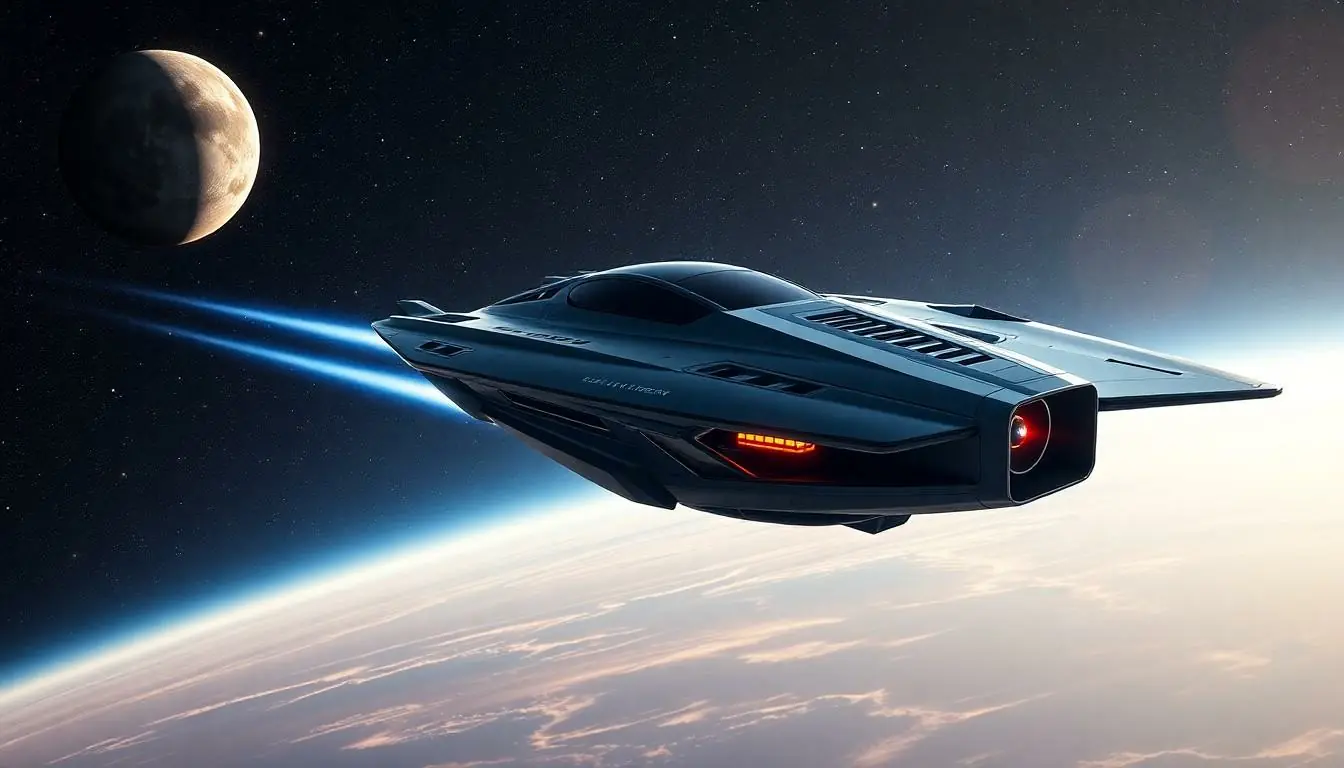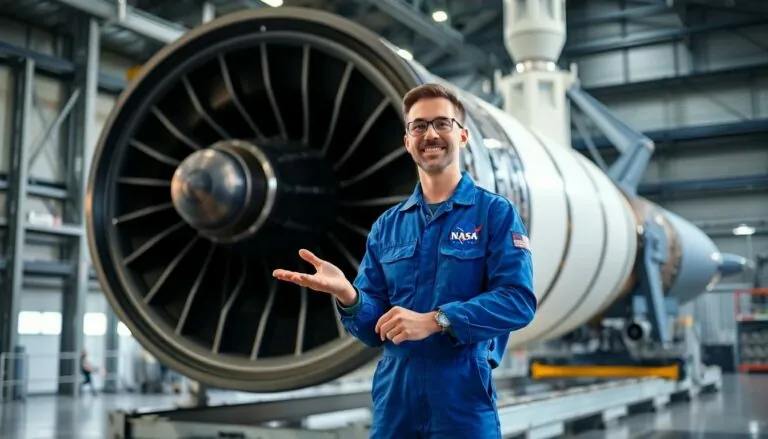Table of Contents
ToggleAs 2024 approaches, the cosmos is buzzing with excitement over groundbreaking space technology that promises to push boundaries further than ever before. Forget about the days of simply gazing at the stars; now, they’re within reach like never before. From revolutionary spacecraft to mind-blowing satellite innovations, the future of space exploration is ready to take off—and it’s not just for astronauts anymore.
Overview of New Space Technology 2024
Innovations in space technology set to debut in 2024 focus on several key areas, enhancing exploration capabilities and accessibility. Advanced spacecraft incorporate cutting-edge propulsion systems. These systems allow for faster travel and mission flexibility, paving the way for deeper space exploration.
Satellite technology sees significant upgrades as well. New generations of satellites boast improved communication capabilities and higher resolution imaging, which support everything from weather forecasting to climate monitoring. Satellites also enhance global connectivity, bridging gaps in underserved regions.
Robotic systems, including autonomous drones and rovers, undergo continuous development. These advanced systems conduct scientific research and perform tasks in environments too hazardous for humans, expanding the scope of exploration missions. Data collection becomes more efficient, supporting real-time analysis and decision-making during missions.
Collaboration in the space sector accelerates due to partnerships between governmental agencies and private companies. This synergy boosts innovation and reduces costs, making space missions more financially viable. As a result, more entities are capable of participating in space ventures, thus democratizing access to space.
Emerging technologies also prioritize sustainability. Space debris mitigation strategies are gaining traction to protect orbital environments. Examples include active debris removal systems, which target defunct satellites and fragments, reducing collision risks.
These advancements in new space technology for 2024 showcase a commitment to revolutionizing the way humanity interacts with outer space. By leveraging technological growth, collective efforts focus on making space an accessible frontier for all.
Key Innovations Shaping the Future

Innovations in space technology set to launch in 2024 are transforming exploration efforts. These breakthroughs not only enhance current capabilities but also broaden access to the cosmos.
Advanced Propulsion Systems
Advanced propulsion systems are redefining space travel. These technologies significantly reduce travel time between celestial bodies. For instance, ion propulsion offers higher efficiency, allowing missions to reach Mars and beyond more rapidly. Enhanced thermal nuclear systems are also emerging, potentially enabling longer-duration missions by providing sustained thrust. Research into solar sails continues, presenting possibilities for propulsion using sunlight. These advancements collectively foster deeper space exploration and flexible mission planning.
Autonomous Spacecraft
Autonomous spacecraft represent a breakthrough in mission execution. They enhance operational efficiency through self-navigation and decision-making capabilities. These systems reduce reliance on ground control, enabling real-time adaptations to unexpected conditions. NASA’s Mars rovers exemplify this technology, executing complex tasks independently while gathering critical data. Advanced AI algorithms improve mission reliability, increasing the accuracy of data collection. Enhanced collaboration between robotic systems and human operators will drive future exploration and research initiatives.
Impact on Space Exploration
New space technologies in 2024 dramatically reshape exploration strategies. Innovations enable access to previously unreachable areas, fostering an era of unprecedented discovery.
Mars Missions
Robust advancements in propulsion systems pave the way for Mars missions. Faster travel times allow spacecraft to reach the red planet more efficiently, opening pathways for crewed and uncrewed missions alike. Robotics play a crucial role, assisting in tasks from sample collection to habitat construction. Enhanced communication satellites provide real-time data transfer, improving mission coordination. Research focuses on sustainable life-support systems that support human presence. These initiatives promise to establish a human footprint on Mars, transforming it into a viable destination for future explorers.
Lunar Colonization Efforts
Lunar colonization initiatives benefit significantly from new technologies. Innovative lunar landers feature advanced landing systems that ensure safer touchdowns. Additionally, autonomous rovers equipped with cutting-edge sensors analyze the lunar surface for resource extraction. Communication advancements enhance connectivity with Earth, ensuring smooth operational support. Collaboration between government bodies and private enterprises accelerates development timelines. Sustainable practices, particularly in resource utilization, are prioritized to minimize environmental impact. These efforts collectively aim to establish a permanent human presence on the Moon, serving as a stepping stone for deeper space exploration.
Commercial Applications of New Space Technology
New space technology in 2024 significantly enhances commercial opportunities across various sectors, particularly in satellite services and space tourism.
Satellite Services
Satellite services undergo transformative enhancements with advanced satellite technology. Higher resolution imaging allows for improvements in urban planning and environmental monitoring. Enhanced communication capabilities bridge gaps in underserved areas, providing reliable internet and data services. Integration of artificial intelligence into satellites supports efficient data processing and analysis. These advancements not only enhance everyday connectivity but also facilitate mission-critical operations for businesses and governments. Businesses benefit from utilizing real-time data for informed decisions, while governmental organizations leverage improved imaging for disaster response and recovery efforts.
Space Tourism
Space tourism emerges as a burgeoning industry in 2024, making space accessible to civilians. Companies offer experiences ranging from suborbital flights to stays in commercial space hotels. Enhanced safety measures associated with advanced spacecraft contribute to increased consumer confidence. The excitement surrounding human spaceflight drives significant investment in this sector. Experiences tailored for tourists focus on breathtaking views of Earth and unique weightlessness effects. This democratization of space promises to expand the market, bringing new players into the arena as interest surges. Making space travel a reality for the average person reshapes public perception of space exploration and fosters a greater appreciation for the cosmos.
Challenges and Considerations
Emerging space technologies in 2024 present substantial challenges that require strategic management. Regulatory frameworks are vital to ensure safety and compliance as innovations unfold. Agencies like the Federal Aviation Administration (FAA) and the National Aeronautics and Space Administration (NASA) coordinate to establish guidelines. Understanding these regulations helps both private companies and government entities navigate the complexities of space operations. Compliance with international treaties also plays a critical role in maintaining order in orbital environments.
Sustainability issues must remain a priority in the development of space technologies. As more satellites and spacecraft launch, space debris becomes a growing concern. Implementing strategies for debris tracking and removal is essential to protect operational spacecraft and planetary bodies. The increasing focus on sustainable practices in resource utilization reflects a commitment to future generations. Efforts like reusable launch systems aim to minimize waste, while partnerships across sectors promote shared responsibilities in ecological stewardship. Prioritizing these aspects can foster a more sustainable exploration of space.
The advancements in space technology set to emerge in 2024 promise to redefine humanity’s relationship with the cosmos. With innovative propulsion systems and enhanced satellite capabilities, exploration will become more efficient and accessible. The collaboration between government and private sectors fosters rapid development while prioritizing sustainability.
As space tourism gains momentum and new commercial applications arise, a broader audience will engage with space exploration. The commitment to responsible practices ensures that future generations can enjoy the wonders of the universe. These developments not only spark curiosity but also pave the way for a future where space is within reach for everyone.







